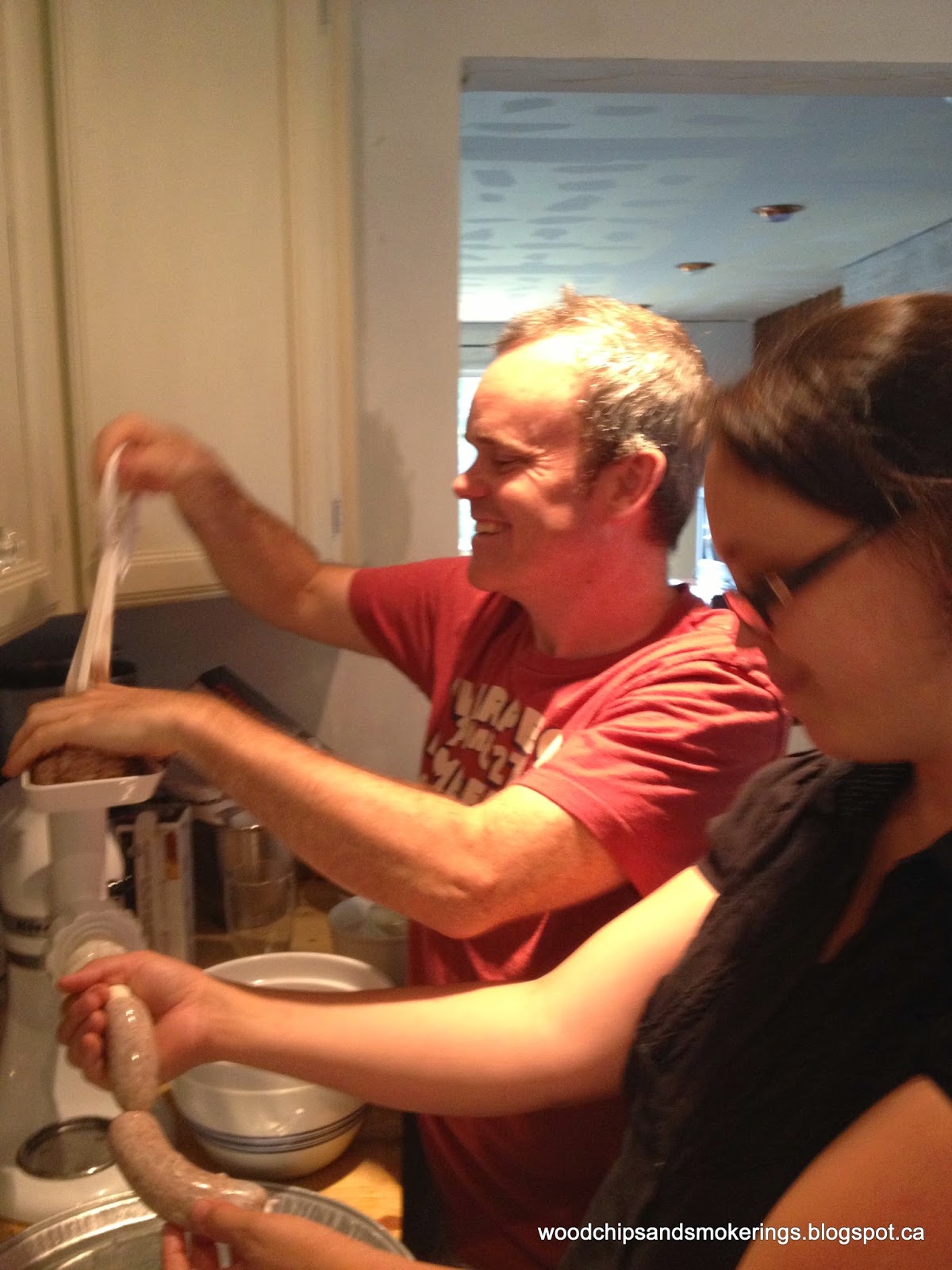So i bought a meat grinder for my wife's KitchenAid (Happy Mother's Day baby!) and I put aside a Saturday for "Project Sausage." I decided to go basic the first time around, so I looked up recipes in our copy of The Joy of Cooking, settling on a simple Country Sausage.
The recipe calls for half pork butt/shoulder and half game meat. So here's about two pounds of diced pork butt and venison -- one-inch squared -- that i've put in the freezer for a couple of hours. I made sure there was a lot of fatty pieces as venison is pretty lean.
This part is weirdly satisfying, in a morbid kind of way. I put my meat through twice -- a double-grind. In retrospect, I should have done a third to make the sausages more tender. Live and learn. Step 3 was the seasoning. This is the time to mix in any spices you want to add. The key to this i frying up a little and tasting it to make sure you have the right combination.
Step 4 was the stuffing. I bought 12 feet of "casings" (aka intestine) at a local butcher. I thought it was a little pricey, but there's a lot of casing in there -- it goes a long way. Pro Tip: store the casing in salted water in a baggy, and put it in the freezer. It'll keep this way for months.
I then greased up the sausage attachment (that's what He said), slipped the casing on, and started pushing the seasoned sausage mixture through the feed tube. This was very frustrating as a first-timer, but equally as satisfying. I found the meat would get air stuck in it as I was cramming it in the feed tube which would cause the sausages to balloon up -- a simple prick with a knife solved this. But it was still annoying.
As you can see in the image below, once you get in the groove everything looks pretty polished. The key is to apply slow and steady pressure on the feed tube, then form the links with clockwise, then counter-clockwise, twists.
The end result are pretty good-looking links, no?
I mean, i missed a few here and there, but that's easily remedied before you place them on the smoker.
I dropped some maple chunks in and let them smoke for about two hours -- though 90 minutes would have sufficed.
Here is the luscious result:
Great colour and superb taste. The great thing about these sausages is that they are ready to eat, but also great grilled. And everyone in my house ate 'em up -- deer or no deer. Was it a lot of work? Sure. Was it a little gross? A little maybe. But the results more than made it worthwhile. Having homemade, 100-percent meat sausage -- no filler -- is a great feeling. The only downside is that it'll be hard to consume those cruddy diner breakfast sausages once you've tasted your own.

















































